Ancient Psychedelia: Alien Gods & Mushroom Goddesses
Online Book - Chapter 11, Page 219
Back to Online Book Mainpage / Next Page (Chapter 11, Page 220)
The Cista Mystica (Secret Basket) is another sacred object similar to the Kantharos. This was used to hold all kinds of sacred religious objects, we are told, however, it’s more likely it was used to carry mushrooms for the rituals. The Cista Mystica may sometimes feature the Kantheros on its face. The Cista Mystica is often guarded by a serpent like Zeus and Isis (41d). (252)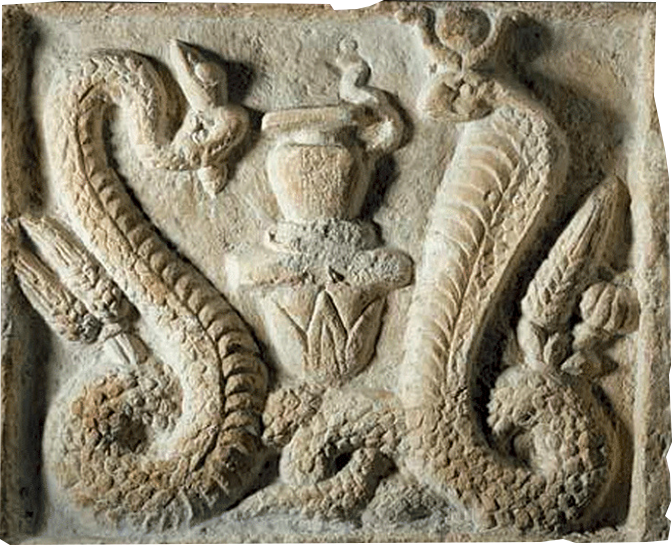 (41d) Isis-Thermoutis & Agathos Daimon c. 100-200 AD The halo, also called the nimbus, aureole, glory, or gloriole, is said to represent the sun, in most cases and is usually depicted behind the head however, it can also be shown behind the entire body in which case it’s referred to as a “mandoria” in the shape of the visica piscus but slightly oval or “egg-shaped.” The color is often white, yellow, golden, or sometimes red. It appears to me that the word “halo” or “halos” from Greek, ended up being transplanted onto the symbolism which occurred much earlier. The initial idea of enlightenment was not linguistically connected to the meaning of the halo, so the word was applied to the imagery. In the 1560s, the word was translated as meaning “ring of light around the sun or moon.” The use of it in the sense of “light around the head of a holy person or deity” was only first recorded in the 1640s, (253) which makes sense because this is when you first see it really exaggerated on the Christian figures of Christ or the Virgin Mary. Before this period, it did not look like a “halo” as its imagery implied more of “rays of light” previously, which were in actuality displaying the gills of the inside of the cap of the mushroom. God forbid the church should admit the idea of the halo had anything to do with the previous idea of enlightenment, so the mushroom illumination was changed into a ring around the head, which we now call a “halo.” Other scholars have suggested the word also may derive from the “threshing floor” and the Haloa, but this is extremely esoteric in its connection and many changes of meaning and wordplay would have to have occurred. In Greece, during the times of Eleusis ceremonies there was a festival of Haloa or Alo, which was an Attic festival in honor of Demeter. It was a gardening festival where threshing took place to separate the edible part of the cereal grain after harvest. This festival was also called Thalysia or Syncomesteria. (254) Many examples exist of the halo, from early cave art (1b, d; 2b, d) to mummy masks from Egypt (32g) to halos around the head of serpents like Abraxas (39f; 54h). In addition we see it being handed over by angels like Nike/Victory in later Roman times (98c, d). |
The original wreath that was worn around the head, made from laurel, ivy leaves, etc., and worn at festivals, was likely the idea for the concept of the “halo” that became the Roman substitute for the mushroom or entheogenic illumination featured around the heads of all ancient deities. Something was needed to replace this “veil” and headdress that was literally “everywhere” and very much ingrained in the consciousness of the people around the world. 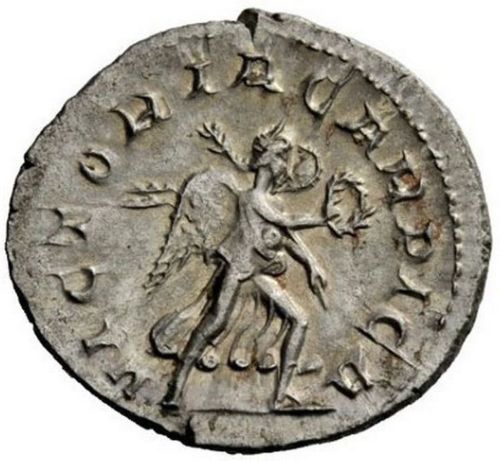 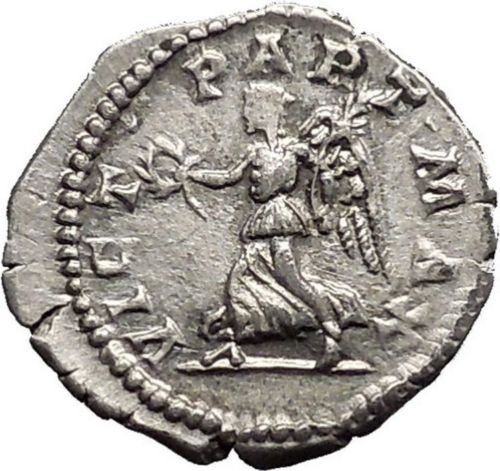 R: (98d) Caracalla - Roman Emperor Victory advancing left, holding wreath and palm: 198-217 AD The original coins display a slow progression from “illumination” to the wreath type “halo” around the head of angels and then to the Christian figures in the Byzantine era (55p). 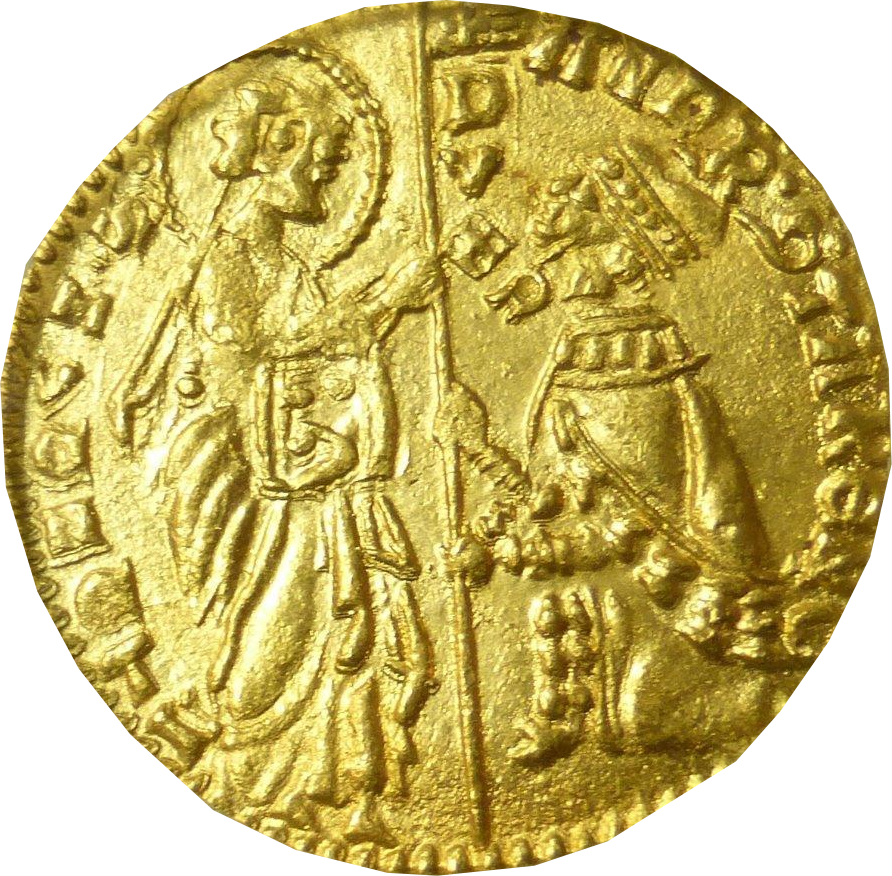 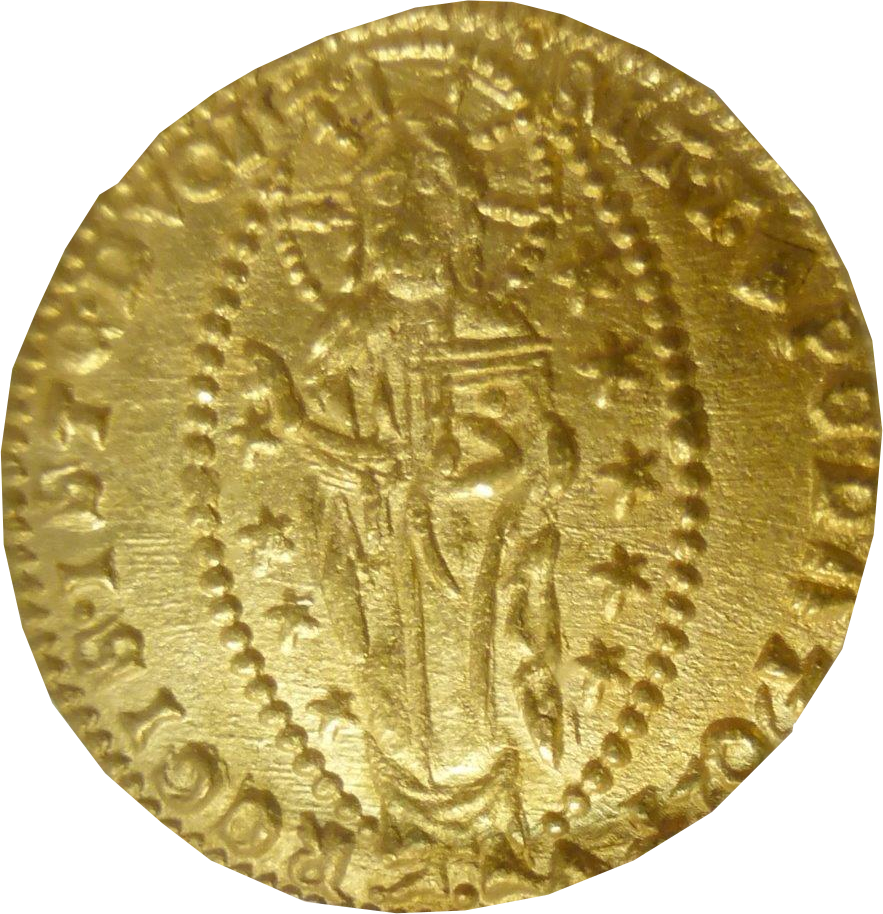 (55p) Venice Andrea Contarin c 1366 AD The placing of the halo on the head, was the accomplishment of the Roman goddess Nike, also known as the angel of “Victory,” who was herself, a mushroom, as all angels are. This wreath crowned the head of the Caesars and the Roman emperors as well as the winners of the Olympic games. It has much deeper roots even. It may be likened as well to the receiver of the arrows of cupid or the cherubim (Cloud-born Angels). One of the dead giveaways that the wreath via the halo, was originally the mushroom can be found on rare select coins from Israel from 40 BC-50 AD (51g, h) and Rome from the era of 50 AD (52a). (252) Apples of Apollo, p. 52 (253) https://www.etymonline.com/word/halo (254) Apples of Apollo, p. 202 |
Go Back to Page 218